Abstract
Pigeons acquired a successive depayed matching-to-sample task at delay intervals ranging from 2.5 to 7 seconds. Test sessions were conducted during which delay-interval illumination conditions were changed from those illumination conditions that prevailed during the baselines. Compared to baseline delayed matching performance, changing delay-interval illumination disrupted matching. This disruption occurred whether the change in delay-interval illumination represented an increase or a decrease, relative to the baseline, and whether there was or was not a change in illumination during the test session. It was concluded that illumination per se introduced during delay intervals of delayed matching tasks does not interfere with pigeon short-term memory. Rather, a change in delay-interval illumination, relative to the baseline, appears to retroactively interfere in pigeon short-term memory.
Full text
PDF
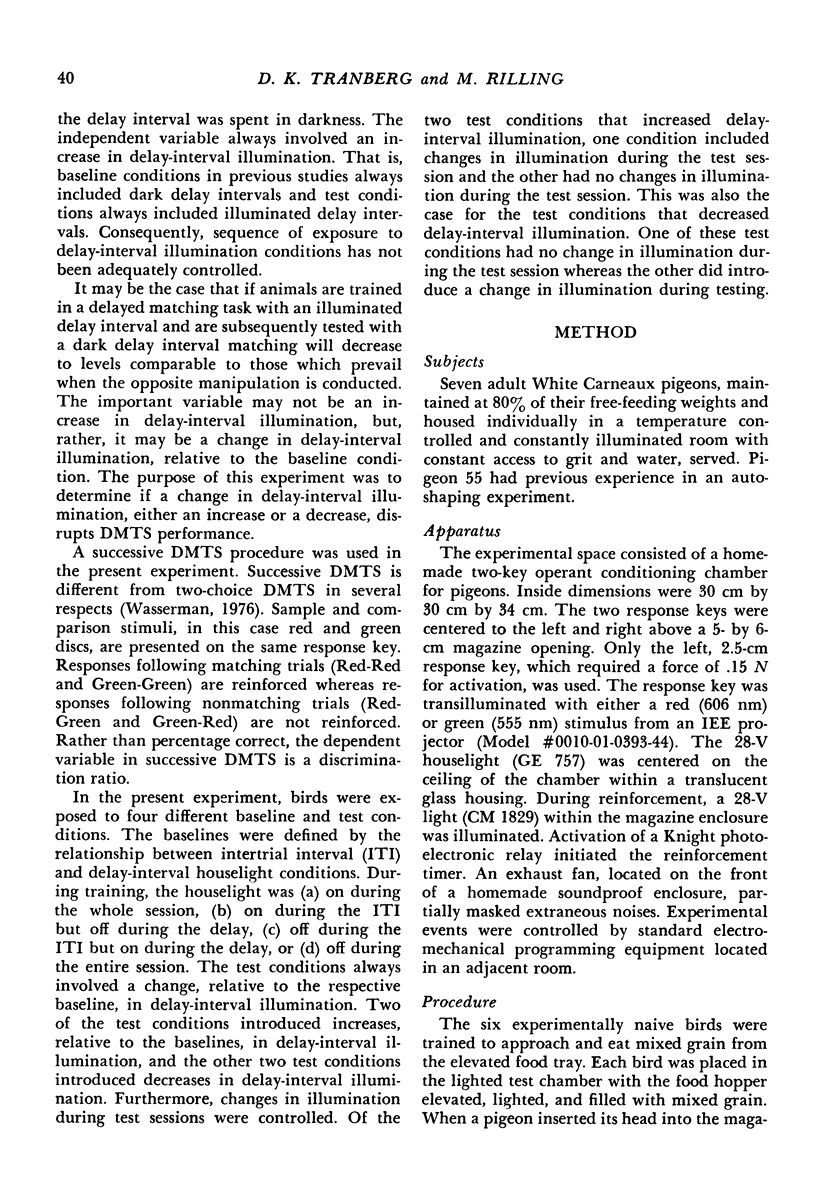
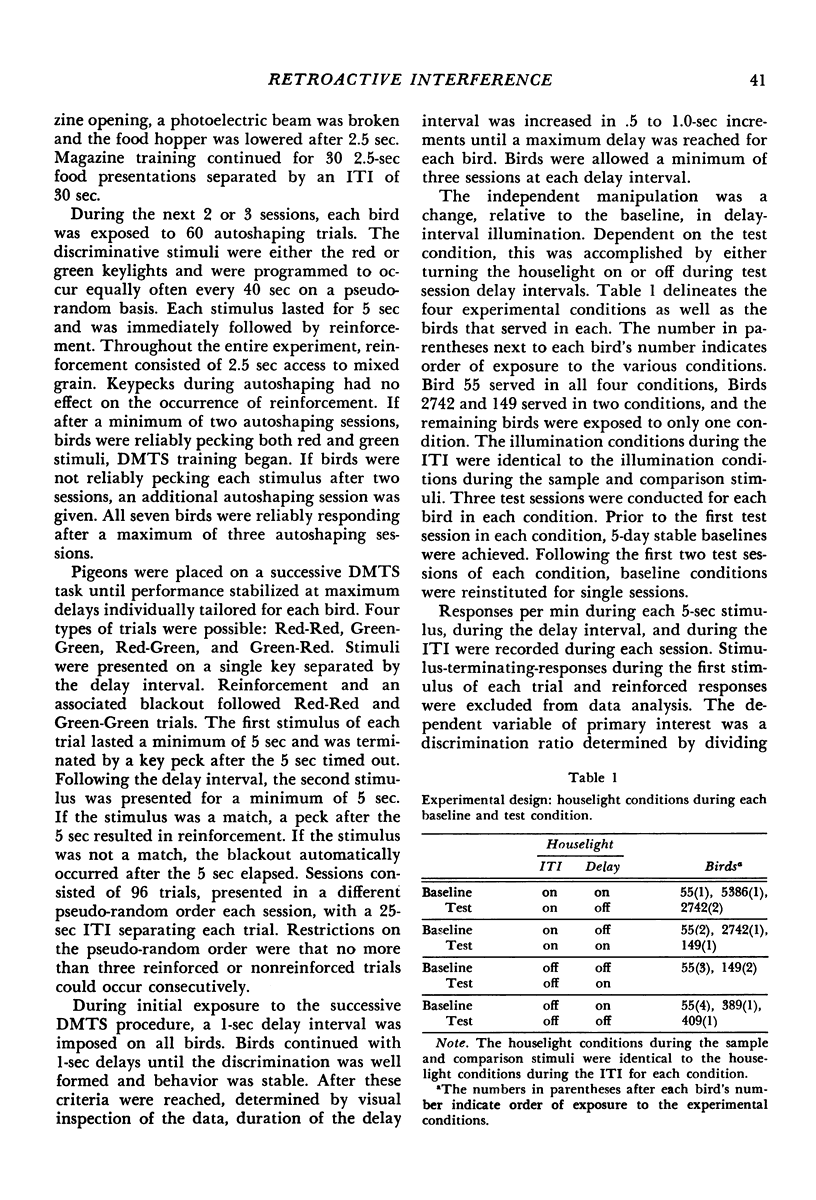
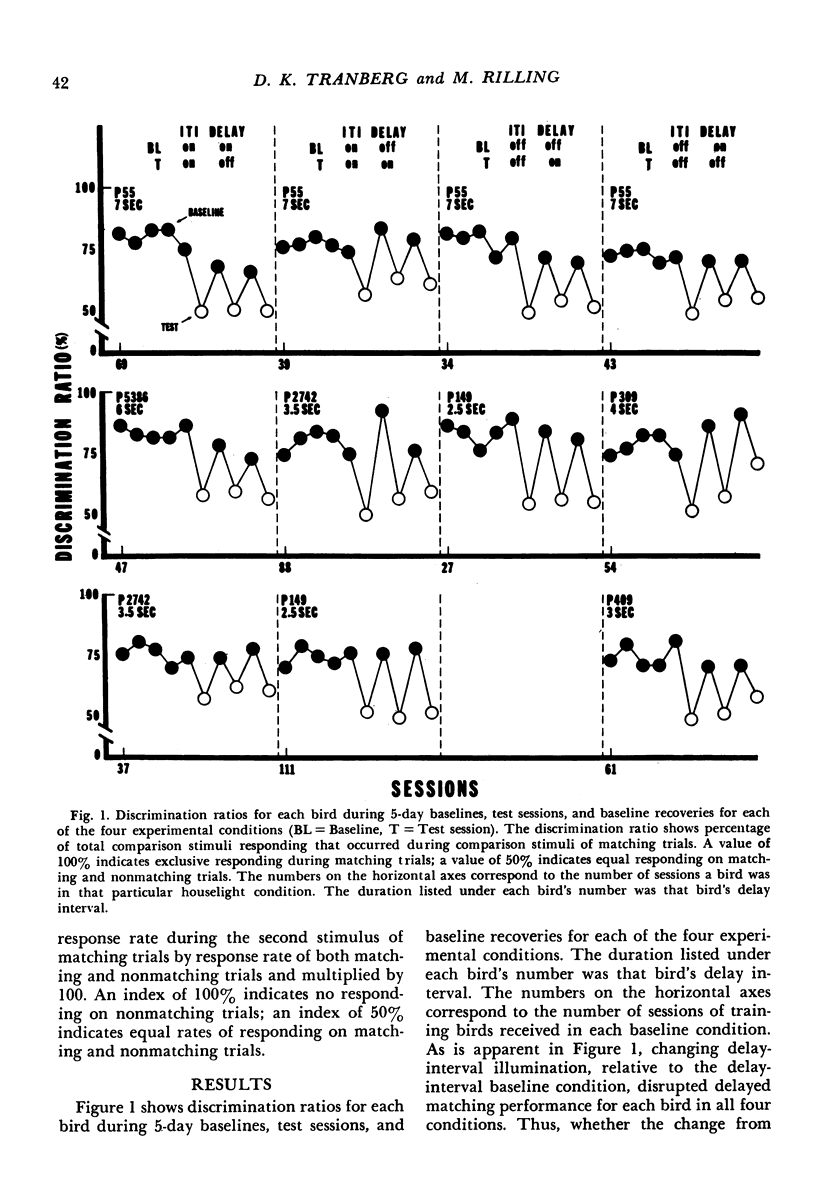
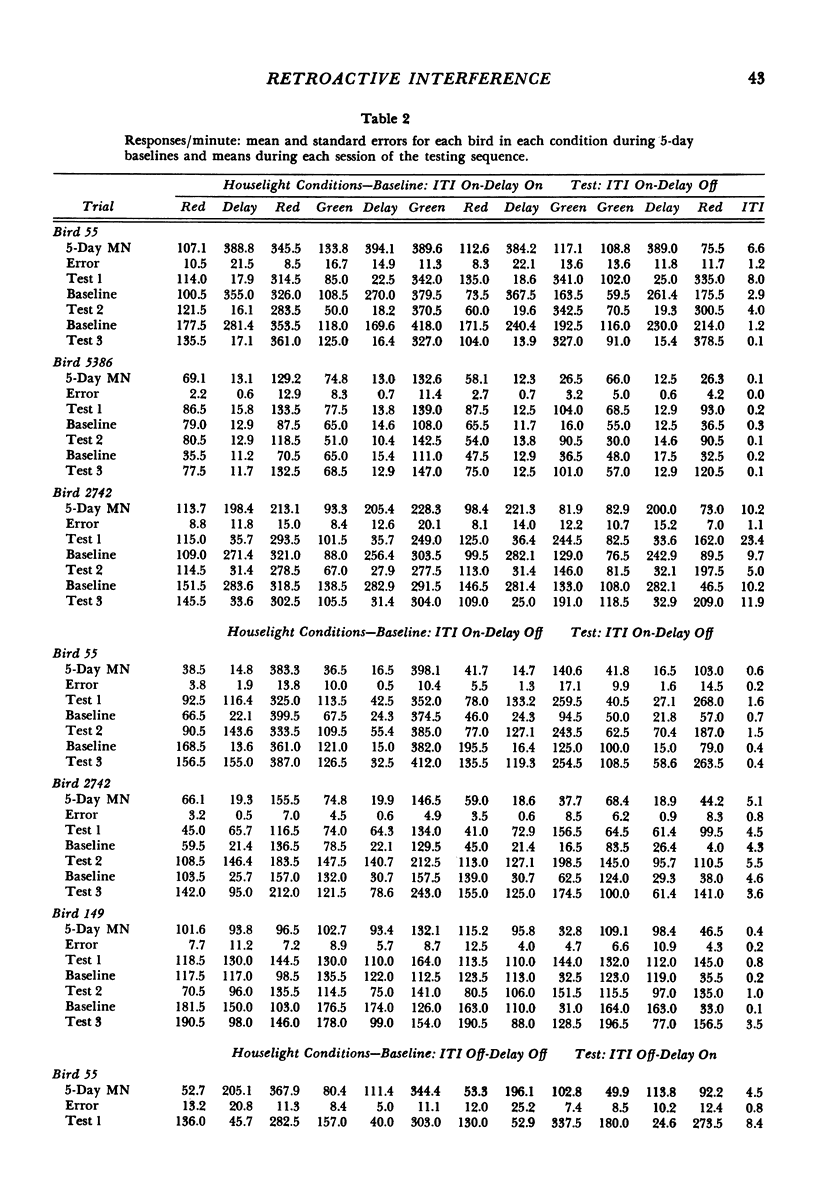
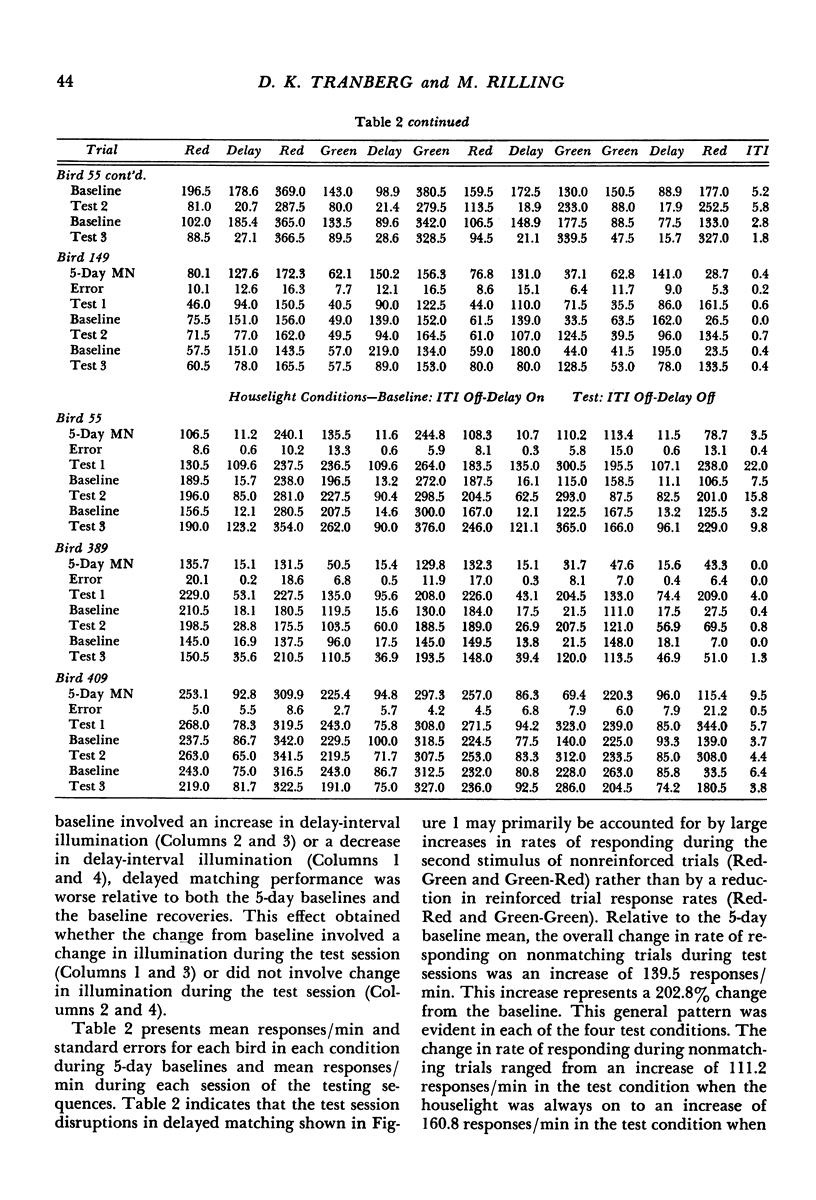
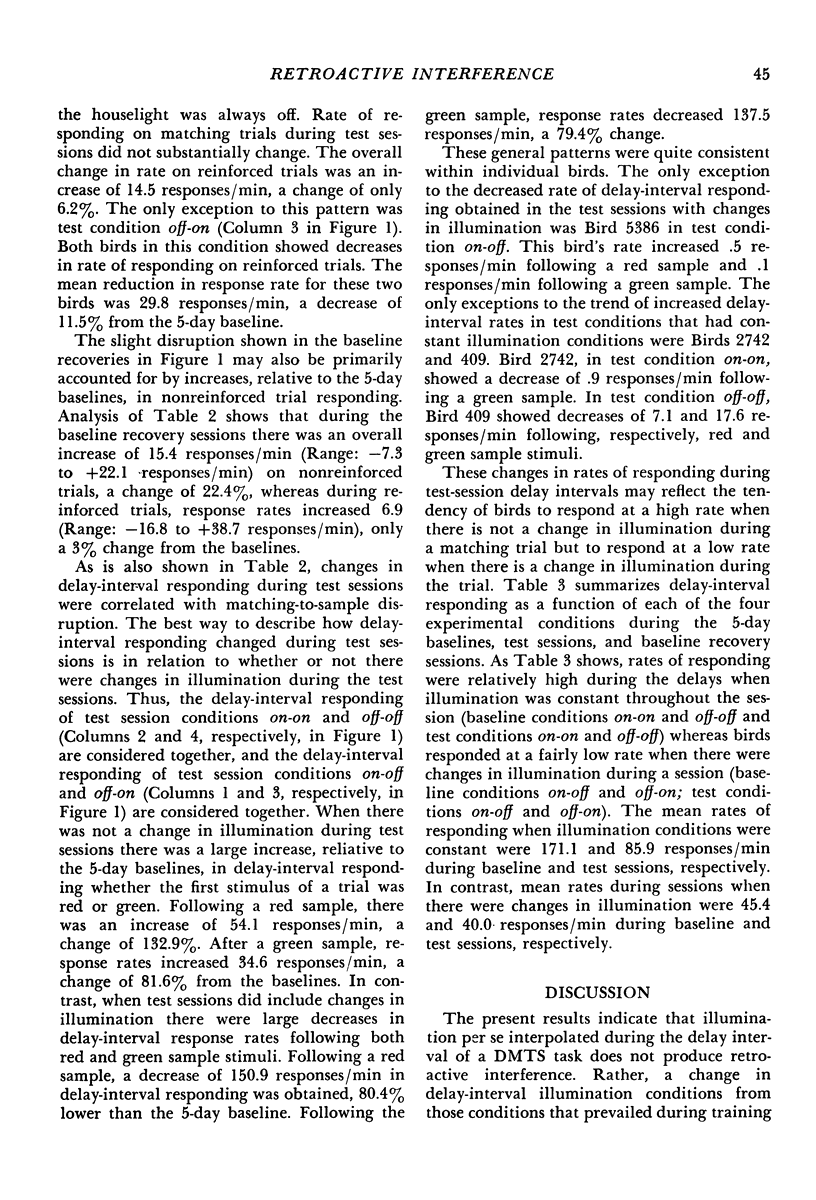
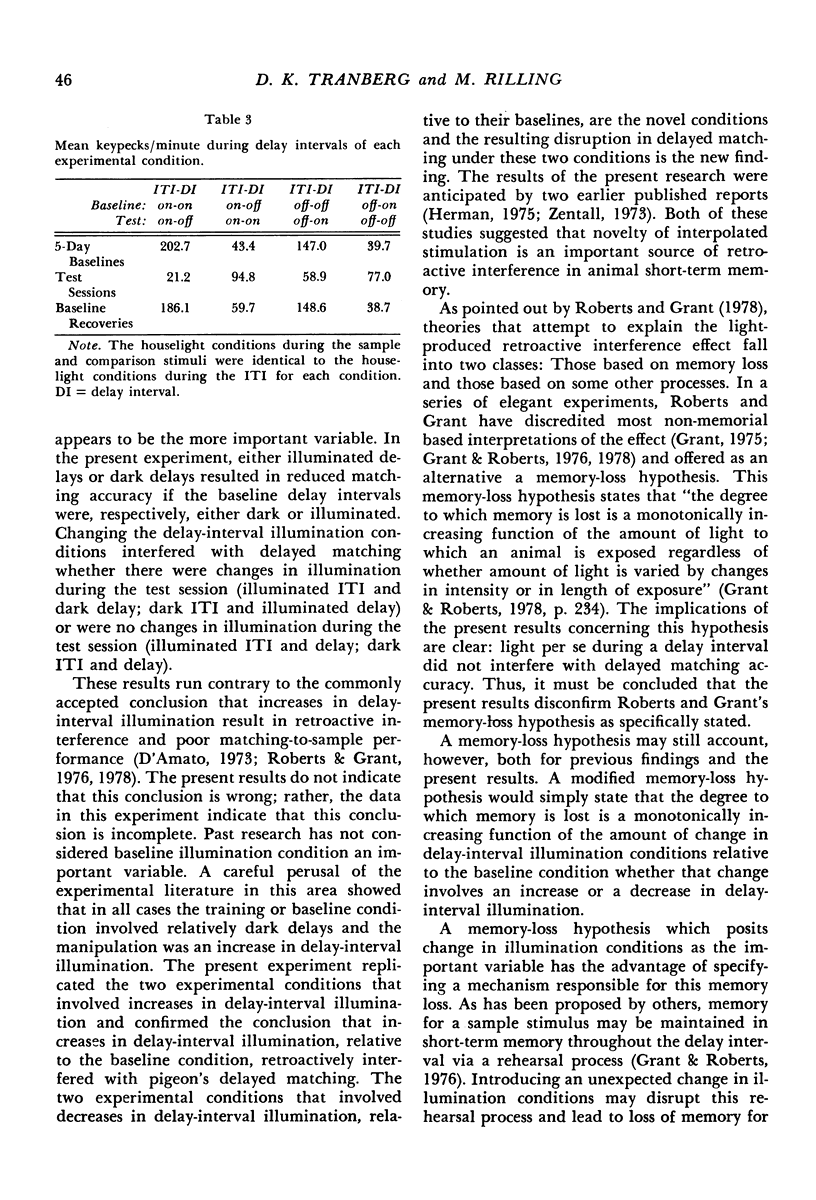
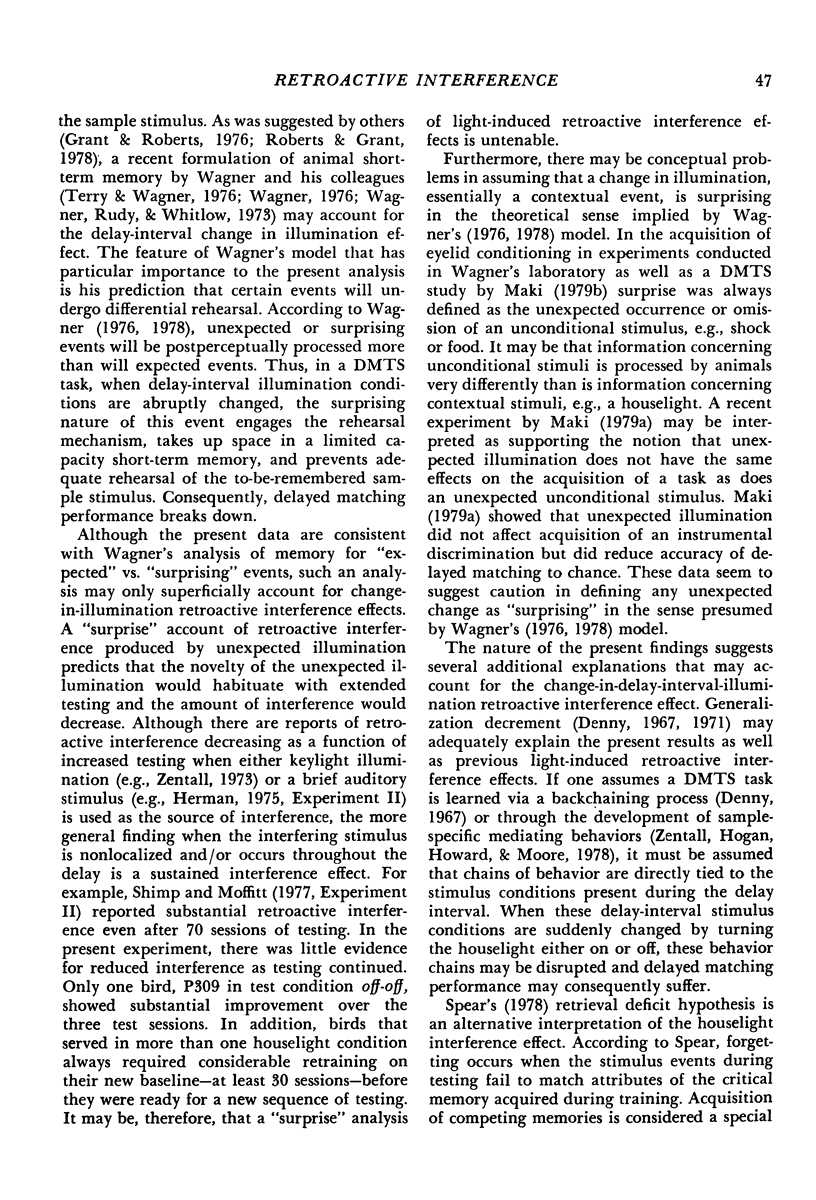
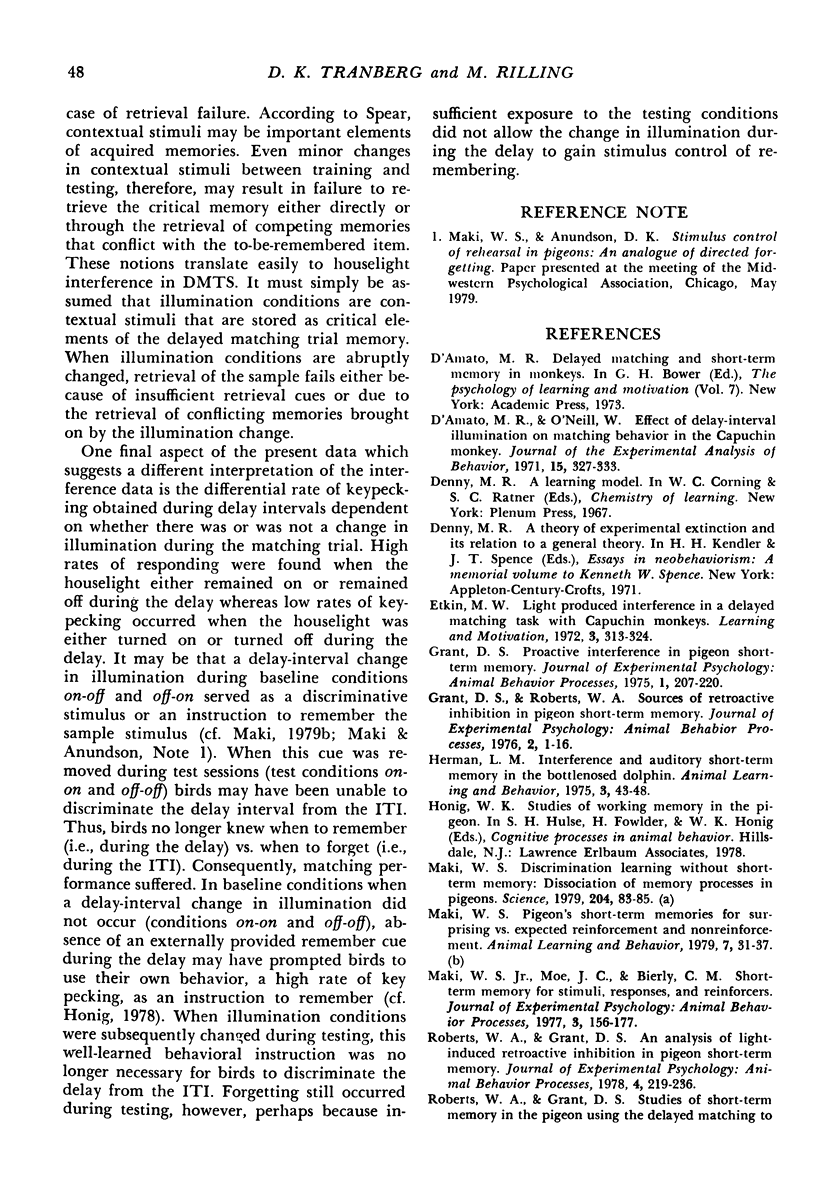
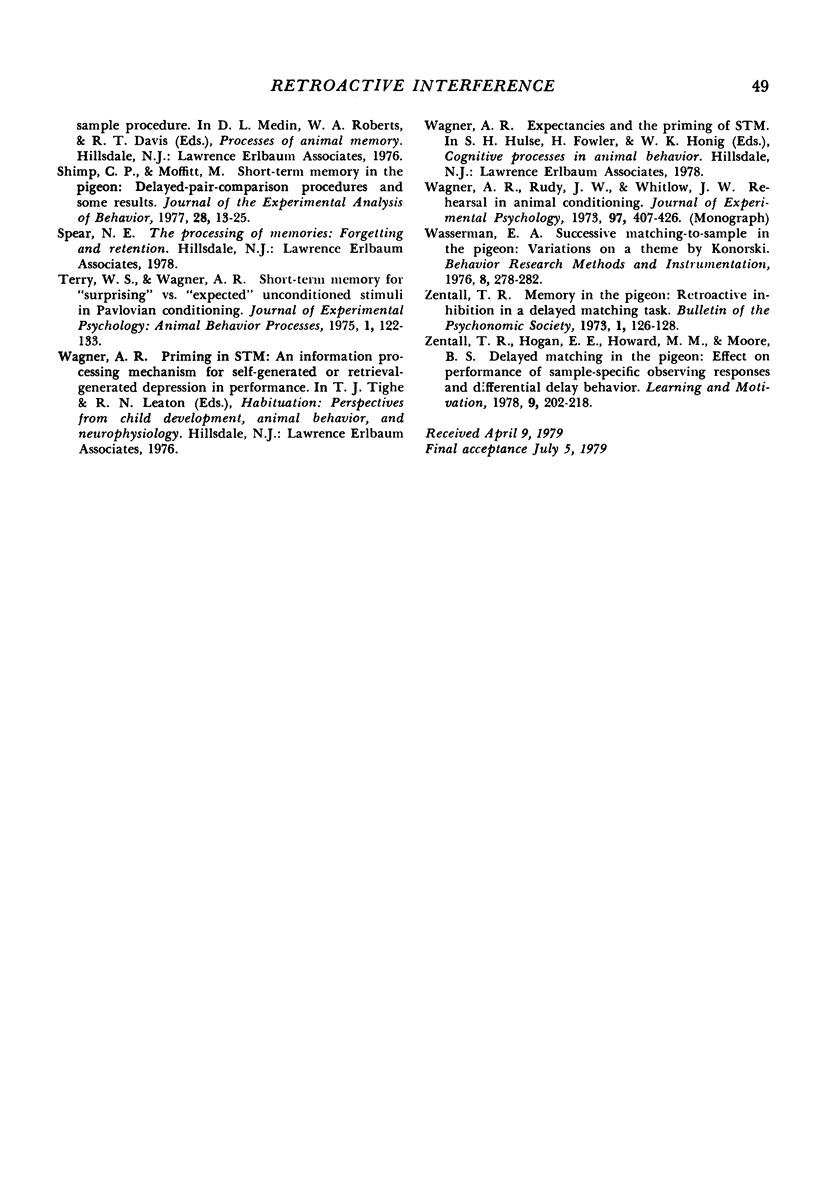
Selected References
These references are in PubMed. This may not be the complete list of references from this article.
- D'Amato M. R., O'neill W. Effect of delay-interval illumination on matching behavior in the capuchin monkey. J Exp Anal Behav. 1971 May;15(3):327–333. doi: 10.1901/jeab.1971.15-327. [DOI] [PMC free article] [PubMed] [Google Scholar]
- Maki W. S. Discrimination learning without short-term memory: dissociation of memory processes in pigeons. Science. 1979 Apr 6;204(4388):83–85. doi: 10.1126/science.432629. [DOI] [PubMed] [Google Scholar]
- Shimp C. P., Moffitt M. Short-term memory in the pigeon: delayed-pair-comparison procedures and some results. J Exp Anal Behav. 1977 Jul;28(1):13–25. doi: 10.1901/jeab.1977.28-13. [DOI] [PMC free article] [PubMed] [Google Scholar]
- Terry W. S., Wagner A. R. Short-term memory for "surprising" versus "expected" unconditioned stimuli in Pavlovian conditioning. J Exp Psychol Anim Behav Process. 1975 Apr;1(2):122–133. doi: 10.1037//0097-7403.1.2.122. [DOI] [PubMed] [Google Scholar]
- Wagner A. R., Rudy J. W., Whitlow J. W. Rehearsal in animal conditioning. J Exp Psychol. 1973 Mar;97(3):407–426. doi: 10.1037/h0034136. [DOI] [PubMed] [Google Scholar]


